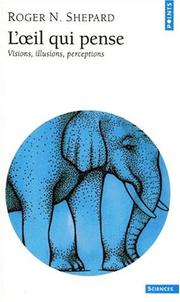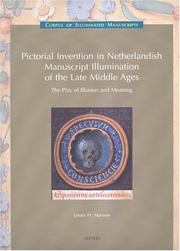| Listing 1 - 4 of 4 |
Sort by
|
Book
ISBN: 9782873404482 Year: 2019 Publisher: Crisnée (Belgique) : Yellow now,
Abstract | Keywords | Export | Availability | Bookmark
 Loading...
Loading...Choose an application
- Reference Manager
- EndNote
- RefWorks (Direct export to RefWorks)
Le cinéma a été inventé à la fin du siècle d'Alexandre Dumas, de Balzac et de Jules Verne ; très vite, il fut prêt à prendre la relève de toutes les formes de littérature, de l'invention de mondes possibles à l'histoire des choses advenues, en passant par l'exploration du monde réel et celle des sentiments humains. C'est ce qu'un lieu commun de l'histoire du cinéma a résumé par le partage entre une voie Lumière, réaliste et terre-à-terre, et une voie Méliès, imaginative et fantaisiste.C'est oublier que le cinéma a été aussi, à sa naissance, l'exact contemporain de l'homme invisible et de l'inconscient freudien, et qu'il allait être bientôt celui de la relativité et du surréalisme. Armé d'entrée de jeu pour la capture automate des apparences et pour la fabrication de mondes merveilleux, le cinématographe se découvrit de plus en plus attiré par cet équivoque mais séduisant moyen terme entre réalité et fantaisie : l'illusion.Il existe en cinéma tous les degrés de l'illusoire, depuis les plus simples (des vessies prises pour des lanternes). On s'est ici surtout intéressé à des constructions plus élaborées, jouant des prédispositions de l'esprit humain à se laisser entraîner dans l'irréel (par le rêve, le fantasme, l'hallucination et autres illusions matérielles), mais aussi, mettant en évidence qu'au fond, l'illusion n'est qu'une fiction qui se serait donné davantage de moyens pour convaincre son destinataire, lui souffler de faire un peu plus semblant de croire qu'il croit - et parfois, l'entraîner véritablement jusqu'au point où il ne sait plus où il en est.
Cinéma --- Illusion (art) --- Surnaturel --- Thèmes, motifs. --- Au cinéma.

ISBN: 9782020471749 2020471744 Year: 2000 Volume: S140 Publisher: Paris : Seuil,
Abstract | Keywords | Export | Availability | Bookmark
 Loading...
Loading...Choose an application
- Reference Manager
- EndNote
- RefWorks (Direct export to RefWorks)
Optical illusions --- Visual perception --- Illusions d'optique --- Perception visuelle --- Illusion (art)
Book
ISBN: 8881255227 9788881255221 Year: 2002 Publisher: Firenze : Alinea,
Abstract | Keywords | Export | Availability | Bookmark
 Loading...
Loading...Choose an application
- Reference Manager
- EndNote
- RefWorks (Direct export to RefWorks)
Illusion (art) --- Églises --- Perspective. --- Décoration --- Mural painting and decoration, Italian --- Church decoration and ornament --- Trompe l'oeil painting --- Architecture in art. --- Painters --- linear perspective (technique) --- perspective (technique) --- Church decoration and ornament. --- Mural painting and decoration, Italian. --- Trompe l'oeil painting. --- 1600-1799 --- Italy

ISBN: 904291615X 9789042916159 Year: 2005 Volume: 16 11 Publisher: Paris ; Leuven ; Dudley, MA : Peeters,
Abstract | Keywords | Export | Availability | Bookmark
 Loading...
Loading...Choose an application
- Reference Manager
- EndNote
- RefWorks (Direct export to RefWorks)
Hand-painted books produced in the Low Countries during the late Middle Ages are dazzingly inventive, widely admired both in their own time and today. The makers of Flemish illuminated manuscripts experimented, sometimes flamboyantly, with all aspects of their design, manipulating elements of their format, layout, script, decoration and illustration in radically new and challenging ways. In this book, James H. Marrow discusses prominent features of many of the most exuberant illuminated manuscripts created by leading Flemish illuminators of the 15th and the 16th centuries, considering both the playful ways in which the makers of these books reconfigured their design and the ways they exploited these innovations to define and convey the meaning of their contents more effectively. Marrow considers how the designers of these manuscripts broke down the barriers between the different components of the book ; how the shapes of some manuscripts became a kind of image; how script sometimes became decoration or one of several illusionistically treated elements or fields on the page ; and how decoration and illustration were intermixed in diverse, witty, and provocative fashions. In this final stage in the evolution of the medieval book, leading Flemish illuminators fundamentally changed the structural dynamics of the page, enlarging its fields of visual and pictorial interest and exploiting novel juxtapositions of subject matter and scale, of viewpoint and different kinds of illusionism, to guide viewers beyond the here-and-now, to evoke multiple and alternative levels of truth, and to effect profound transformations of understanding. This is an incisive study of the course of these developments in the Low Countries and of some of the important ways in which they engaged issues central to the function of the visual arts
Book history --- Manuscripts. Epigraphy. Paleography --- anno 1200-1499 --- Netherlands --- Belgique --- België --- Enluminure --- Nederland --- Pays-Bas --- Verluchting van handschriften --- Illumination of books and manuscripts, Flemish --- Realism in art --- Manuscrits à peintures médiévaux --- Enluminure médiévale --- Illusion (art) --- Réalité --- Dans l'art --- Academic collection --- 091 <493> --- 091.31 <493> --- Art, Flemish. --- Art, Medieval --- -Illumination of books and manuscripts, Flemish --- Illumination of books and manuscripts, Medieval --- -745.67 --- Painting, Medieval --- Flemish illumination of books and manuscripts --- Medieval art --- Flemish art --- Handschriftenkunde. Handschriftencatalogi--België --- Verluchte handschriften--België --- Arts Illumination of manuscripts and books --- Conferences - Meetings --- Exhibitions --- 091.31 <493> Verluchte handschriften--België --- 091 <493> Handschriftenkunde. Handschriftencatalogi--België --- 745.67 --- Realism (Art) --- Idealism in art --- Naturalism in art --- Romanticism in art --- Realism in art.
| Listing 1 - 4 of 4 |
Sort by
|

 Search
Search Feedback
Feedback About
About Help
Help News
News